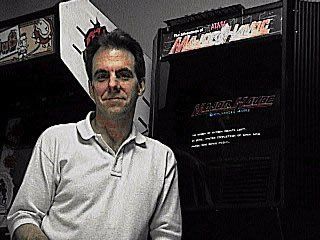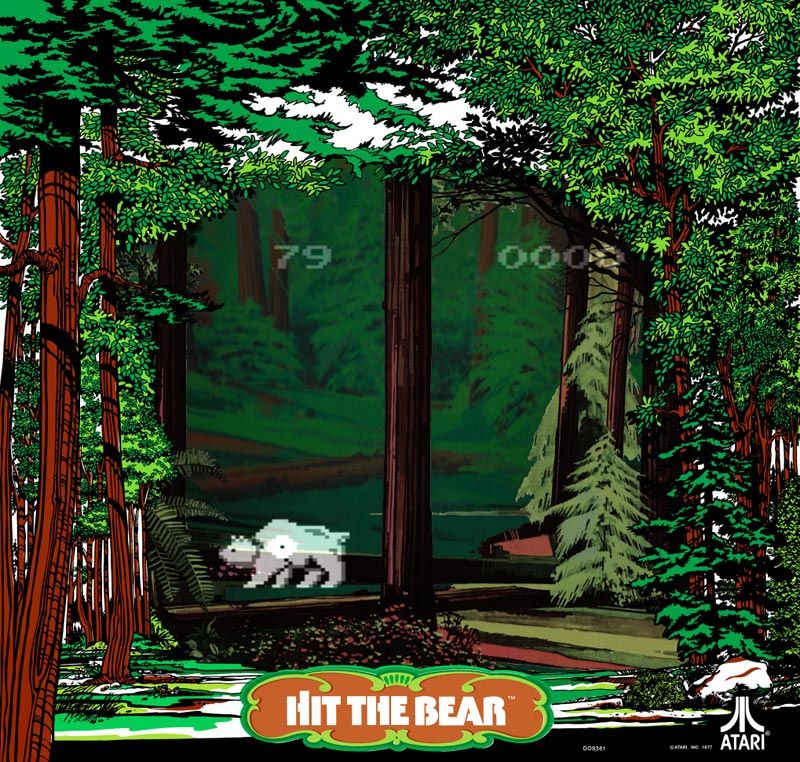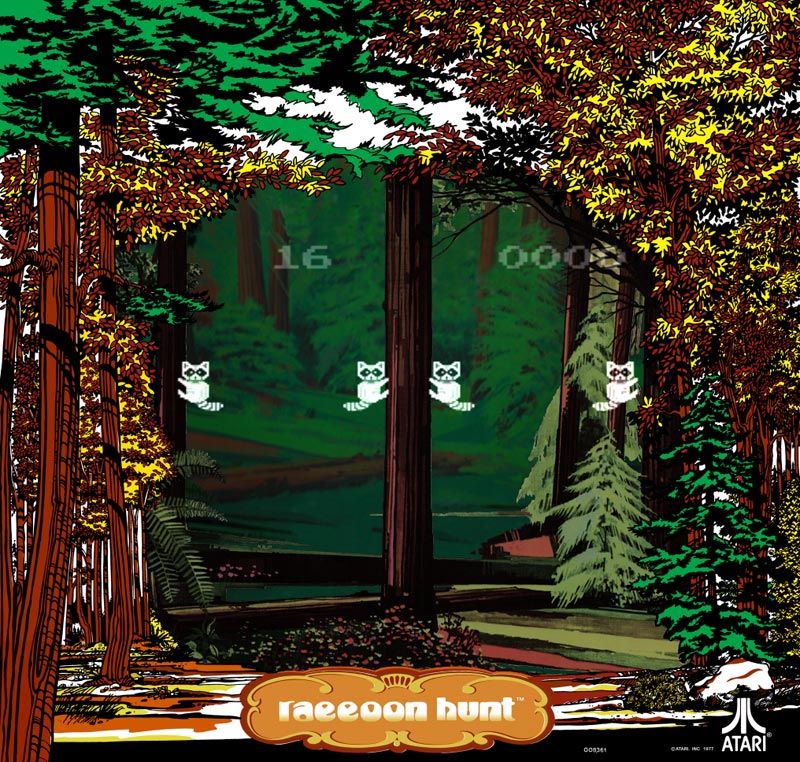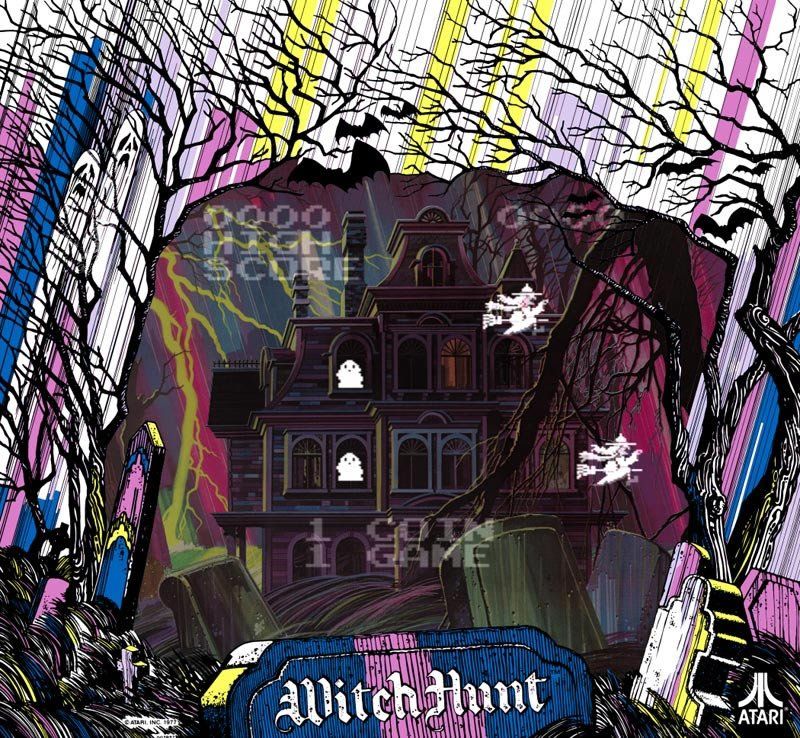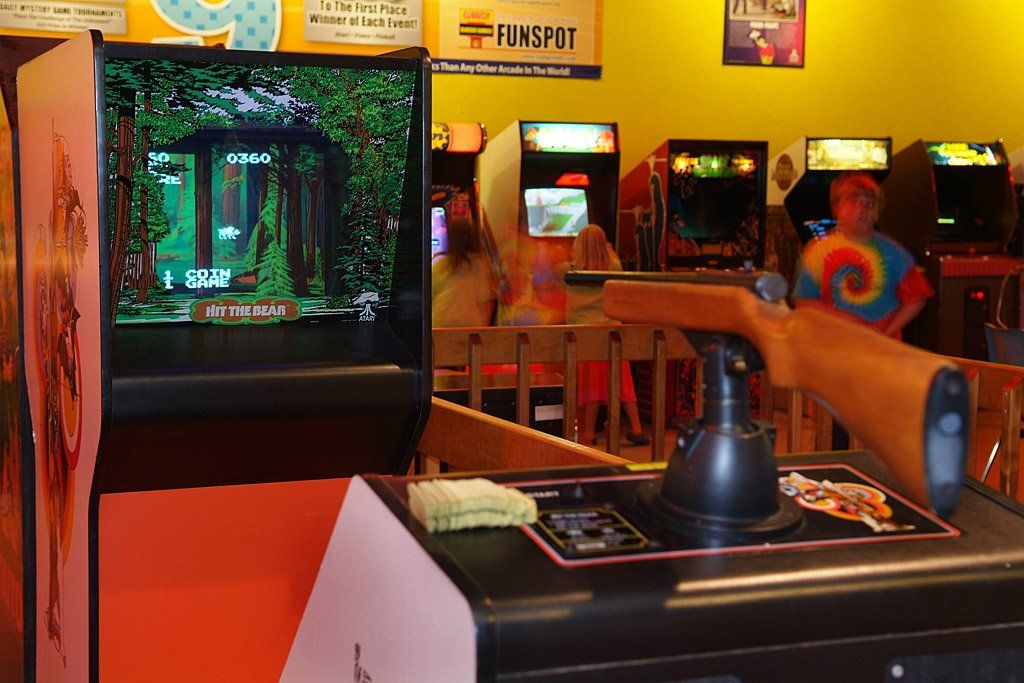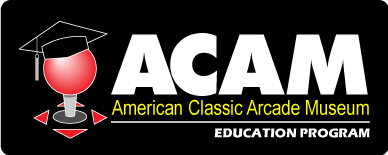Triple Hunt
Game History
Triple Hunt
Publisher/Manufacturer: AtariDeveloper: Owen RubinRelease Year: 1977
By Mike Stulir • Vice President, The American Classic Arcade Museum
Triple Hunt
is one of the extremely rare treasures that can only be found at ACAM. According to our scorekeepers at AURCADE, ACAM has the only Triple Hunt
currently available on public display.
The story of ACAM’s Triple Hunt
goes back many years, but its recent history began in 2006. Atari historian Curt Vendel and ACAM Board member Mike Stulir were working on a project for Atari that required high-resolution photographs of Atari classic arcade game cabinets, and ACAM agreed to provide the games. After shooting photos of the games on the floor for the better part of a day, ACAM President Gary Vincent opened up the warehouse to give access to games in storage. While digging through some rare Atari treasures like Stunt Cycle and a Tank cocktail, Curt unearthed something that made him excited in a way that we had never seen before...a Triple Hunt.
Curt was so excited by this discovery that he literally begged Gary to get that game running and out on display. After an extended restoration by ACAM staff including Gary Vincent, Randy Lawton & Sarah St. John, the game was rolled out for the public during the summer of 2007. The game has been a popular fixture at ACAM ever since.
Triple Hunt
is a shooting target game released by Atari in 1977. It was unique for a number of reasons including sampled sound playback from an 8-track tape player. It also featured three different game modes that could be altered by a flip of a switch & replacing some screen bezel artwork.
Recently, ACAM had an opportunity to talk to Owen Rubin, the creator of Triple Hunt, to get the real story of the history of the game:
ACAM:
What is your educational background?
Owen Rubin:
I graduated U.C. Berkeley in Electrical Engineering and Computer Science, BSEE. I took some multimedia graduate courses at M.I.T., but did not get a degree.
ACAM:
How did you come to work for Atari?
OR:
Close to my graduation, I saw them interviewing at the Berkeley campus, and got an interview. Because I was an Electrical Engineering grad, they thought I wanted to be a hardware engineer, so I was turned down. When I called them and said, "Uh, no, I was interviewing for a game programmer...", I was asked to do a second round of interviews, and hired that day.
ACAM:
You were one of Atari’s first software engineers. Despite being such a new industry, coin-op video games were going through a major shift with the change from discrete logic games (like Pong and Stunt Cycle) to microprocessor/software games. Can you discuss some of the development equipment you were involved with during your early days at Atari?
OR:
I started in a small lab with the guy who did arcade Stunt Cycle. He and another guy designed a game board that had a stamp based play field. You could place one of about 64 letters or or graphics in each stamp. There were also a number of simple motion objects that could be moved around the screen, and display one of 32 or maybe 64 images stored in a EPROM. The boards took either 6502 or 6800 (NOT 68000), programmers choice. I used 6800. To program, we had a device called a MicBug, a small debugger. That connected to the game board, and to a model 33 electromechanical teletype with paper tape reader and puncher.
ACAM:
Triple Hunt was one of your early games at Atari. Where did the idea come from? Was the idea for this game something that you suggested, or was it a concept given to you by Atari?
OR:
It was a long time ago, but I believe this was my idea. I always liked the mechanical "Shoot the Bear" by Seeburg and wanted to do a video game version of it. The game started out as a Shoot the Bear in video. Then we added the raccoons climbing the trees, and finally, my favorite, a haunted mansion game.
ACAM Board member & Funspot founder Bob Lawton (r) films a segment of the History Channel TV show “American Restoration” with Tim Arnold (l) and Rick Dale. The Seeburg “Shoot The Bear” game from 1947 was one of the inspirations for Atari’s “Triple Hunt.”
“I wrote my first (non-vector) game, Cannon Ball, while sitting in my small office at a Model 33 teletype connected to a Motorola MicBug 6800 processor, both of which were connected to simple videogame hardware. I hand-assembled the entire program--it was only 2K, but still took several months--including self-test and saving the code on punched paper tape.”
Owen Rubin
ACAM:
Triple Hunt was unique as it supported three different game modes that could be changed by the operator. What was the reasoning behind that? Was it to extend the life of the game once placed in an arcade?
OR:
Yes. Also, it was expensive as a two piece cabinet, and the game was very simple, so this would let operators change the games easily. Strangely, I saw a few arcades with three of them, one for each setting.
ACAM:
Triple Hunt featured sound stored on an 8-track tape player. This was something that had been done previously by a number of mechanical shooting games like Midway’s “Sea Rescue” or Bally’s “Space Flight.” Having that real sound makes a huge difference in the gameplay experience. What was the inspiration for that feature, and what were the challenges in integrating that technology into a video game?
OR:
I actually did this on my very first game Cannon Ball. The hardware of the time could not do very good sounds, and I wanted something better. I actually did all the sounds for the tapes as well, recoding them from sound effect samples I obtained, and editing the on two reel to reel tape recorders. Since the sounds were simply background sounds, all the hardware had to do is switch on and off the tape player, no big deal. Originally, I wanted a single tape and the hardware would switch which track played, but that turned out to be a lot harder than we thought, and it was a LOT easier to simply ship tapes you swapped when you changed the game. As it turns out, the bear and raccoons were almost the same sounds, so we only had two tapes in the end.
ACAM:
The game utilized a display mechanism involving a mirror. Can you explain how the light gun & display mechanism function?
OR:
Well, it was not actually a light gun. Instead, we had two potentiometers in the base of the gun. During setup, you aligned the gun with the upper left and lower right corners, and the game tracks the movement of the gun. No light reception was necessary. The mirror was a half-silvered mirror that sat in front of the monitor, and let the light of the monitor show through. It also reflected the graphics over the mirror image, and added depth. In the bear game, there was also a display "mask" that let the bear walk in front of some tress, and walk behind others. It was a great, 3D effect. The only real trick was to not hit the bear when he was supposedly behind the tree. If it were a light gun, it would have worked just fine.
ACAM:
Were there any features or gameplay elements for Triple Hunt that you had in mind that did not make it into the game?
OR:
That is true for just about every game ever made. I wanted more complex game play, objects with different flight patterns, etc, etc. That was a LONG time ago, so specifics would be hard to come by.
Triple Hunt's "Hit The Bear"
ACAM:
I would be curious to know more about the creative process.....specifically balancing your ideas for Triple Hunt against the available technology of the day. Can you cite an example of a unique solution used to overcome limited technology?
OR:
Wow, that is a hard question. With Triple Hunt, we had to overcome the problem of light guns for example. In a single cabinet with the gun close, a light gun will work well. But with the gun far away, overhead lights (especially fluorescents) would cause problems. That is why we went with pots on the gun. The sounds on tape is another, given that sound systems of the day could not do that kind of sound, but a tape deck was a simple solution.
ACAM:
If you could step in a time machine and revisit the development of Triple Hunt, is there anything you think you would do different, or do better?
OR:
Probably not. It was a rush project, and I was still learning how to make games. It was too long ago to really remember.
Triple Hunt's "Raccoon Hunt"
ACAM:
One thing that we have been so pleased about is the amount of young kids that are discovering these classic games. We see a lot of this in the museum, and also when we bring our traveling exhibit to places like PAX-East or Escapist Expo. Back in the day, did you ever expect that these games would have the longevity that they have?
OR:
No way. I probably would have kept more of my games if I had known. I love that new people are still discovering them. That is cool. I guess for many of these old games, the simple game play still works.
ACAM:
Looking at some of the games that were being produced while you were at Atari, did you have any favorites....from Atari or other companies?
OR:
I really liked Asteroids when it came out. I was a big fan of DigDug (and I have one) and for a long time, played Defender. I liked Donkey Kong too. And as a strange favorite, Sega's original vector Star Trek. Not sure why, but it was a favorite of mine as well.
ACAM:
What do you think is the most under-rated coin-op game, and why?
OR:
I have to say my own Major Havoc was under rated. It had a LOT of firsts, but because we did it in Vector, a lot of arcades would not buy it, so many never saw it in its original form. The retro kit attached to a monitor that was too slow, so it flickered too much, so it did not look good. It was a great game, and a LOT of depth, one of the first to have a full story behind it, etc. etc. I think had it been done in Raster, it might have done a lot better.
Triple Hunt's "Witch Hunt"
ACAM:
I have heard a ton of crazy stories from the console development guys about what life was like at Atari in the late 70's/early 80's. I don't seem to hear anywhere near as many from the coin-op side. Do you have any stories about the work environment at Atari in the early days?
OR:
The coin-op side was a bit more serious, but had its own crazy times. But engineers took the work seriously. It was not unusual to arrive around 8AM, and not leave until late at night. Often, to get things done, many of us worked all night long many days.
ACAM:
You also spent some time in game development at Bally Sente. Are you still involved in game development today?
OR:
Yes. I am one of the founders, and an executive in a newer company called Innovative Leisure Inc, made up of original game designers from Atari, and one from Cinimetronics. I started a game here, but my executive work made me resign it to a different group. I still have a little say, and will help with wave design.
ACAM:
What kind of games can we expect to see out of Innovative Leisure Inc?
OR: :-) Good ones! You know, of course, I cannot talk about them until released, but I hope we will not disappoint everyone.
ACAM:
Do you have any advice for students looking to pursue game development as a career?
OR:
USC is one choice. USC has a game design program, and we have actually hired some of the graduate students from that program. Basically, study hard, become a great programmer, learn as many tricks as you can, and then get some part time work with a game company. Have patience, and work with people who can teach you as much as you can learn. The interns we have hired are soaking this stuff up like a sponge. We will hire some of them, and eventually, they will lead their own game project.
ACAM thanks Owen Rubin for his contributions to coin-op gaming,and for his time to create this article.
U.S. Mail
American Classic Arcade MuseumPO Box 5533
Weirs Beach, NH 03247
American Classic Arcade Museum
Weirs Beach, NH 03247
G.P.S. Location
American Classic Arcade Museum579 Endicott Street North
Laconia, NH 03246
American Classic Arcade Museum
Laconia, NH 03246
Hours
Monday-Friday 12pm - 10pm
Saturday & Sunday 10am - 10pm
Holiday Hours
Closed Thanksgiving, Christmas Day and Easter Sunday
Christmas Eve 10am - 5pm
New Year's Eve 10am - 9pm
New Year's Day 10am - 10pm
Snow closures possible during inclement winter weather
© Copyright
American Classic Arcade Museum.
All rights Reserved.
The American Classic Arcade Museum is a non-profit organization.
Website by
Clover Creative Group


